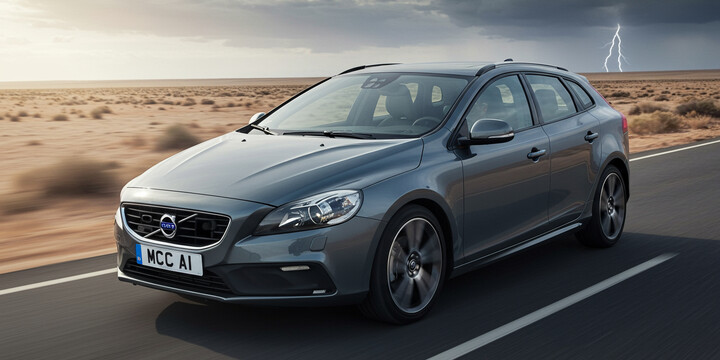
VOLVO V40 (2012-16) 5DR HATCHBACK 2.0 D3 DPF SS 150 EU5 ES NAV 6SPD
The VOLVO V40 (2012-16) 5DR HATCHBACK 2.0 D3 DPF SS 150 EU5 ES NAV 6SPD is a stylish and practical hatchback that fits well into the UK market, especially for those seeking a reliable and versatile vehicle. Its sleek design, combined with a spacious interior, makes it an ideal choice for families, commuters, or individuals looking for a comfortable everyday car. Known for its impressive safety features and build quality, the V40 is often lauded for its excellent driving experience and strong reputation for reliability.
This model is particularly popular among drivers who value fuel efficiency and low running costs, thanks to its efficient diesel engine and EU5 emissions standards. With features like navigation and modern styling, the Volvo V40 stands out as a competitive choice in its class. It’s frequently used for daily commuting, family outings, or even as a first car because of its manageable size and user-friendly features. Compared to rivals, the V40 is known for its solid build, safety credentials, and a comfortable ride, making it a consistently popular option in the used car market. With an average private sale value of around £5,091 and an average mileage of approximately 103,860 miles, the Volvo V40 (2012-16) remains a practical and attractive choice for many UK drivers considering a used vehicle.

average use

The most recent mileage data for the sampled Volvo V40 models (2012-16) indicates that the majority, 40%, have recorded mileages between 120,000 and 130,000 miles. Additionally, 20% of vehicles are in the 90,000 to 100,000 and 70,000 to 80,000 mile ranges, each. Notably, no vehicles have recorded mileages below 70,000 miles or above 130,000 miles in this sample. This distribution suggests that these vehicles tend to have higher mileages, with a significant number approaching or exceeding 120,000 miles, which is common for cars of this age and type.

vehicle values

The private sale valuation data for the Volvo V40 (2012-16) 5DR Hatchback 2.0 D3 DPF SS 150 EU5 ES NAV 6SPD indicates that the most common asking prices are clustered between £5,000 and £6,999, accounting for 40% of the listings. Equally, there is a significant distribution of prices in both the lower (£3,000–£4,000 and £4,000–£5,000, each at 20%) and upper (£6,000–£7,000, also at 20%) ranges. This suggests a relatively tight price band around the mid-to-upper £5,000s, with a notable portion of vehicles priced below £5,000, indicating variability in vehicle condition, age, or optional features. The data reflects a balanced spread, but with a slight concentration in the £5,000–£6,999 range.

production years

According to the latest data, the majority of the Volvo V40 models (from 2012 to 2016) in the sample were manufactured in 2013, accounting for 80%. Vehicles from 2012 make up the remaining 20%. This suggests that the 2013 model year is the most prevalent among these vehicles, which could be useful information when assessing the age and potentially the value or condition of these cars.

colour popularity

The data indicates that among the Volvo V40 models from 2012 to 2016, the most popular paint colour for the vehicle body is Blue, representing 60% of the sample. White and Grey are less common, each accounting for 20%. This suggests that Blue is the dominant colour choice for this model range, with the other colours used less frequently.

ownership cycle

The data indicates that among the sampled 'VOLVO V40 (2012-16) 5DR HATCHBACK 2.0 D3 DPF SS 150 EU5 ES NAV 6SPD' vehicles, the majority (80%) have had either two or five registered keepers, each accounting for 40%. A smaller proportion (20%) has had four registered keepers. This distribution suggests that most vehicles tend to change keepers either once or twice, with fewer vehicles experiencing an intermediate number of ownership changes.

engine choices

Based on the data for the Volvo V40 (2012-16) 5DR hatchback 2.0 D3 DPF SS 150 EU5 ES NAV 6SPD, it appears that all vehicles in the sample are equipped with a 1984 cc engine capacity and exclusively use diesel as their primary fuel type. This indicates a consistent engine specification across the fleet, reflecting a uniform approach to engine sizing and fuel choice within this model range.












